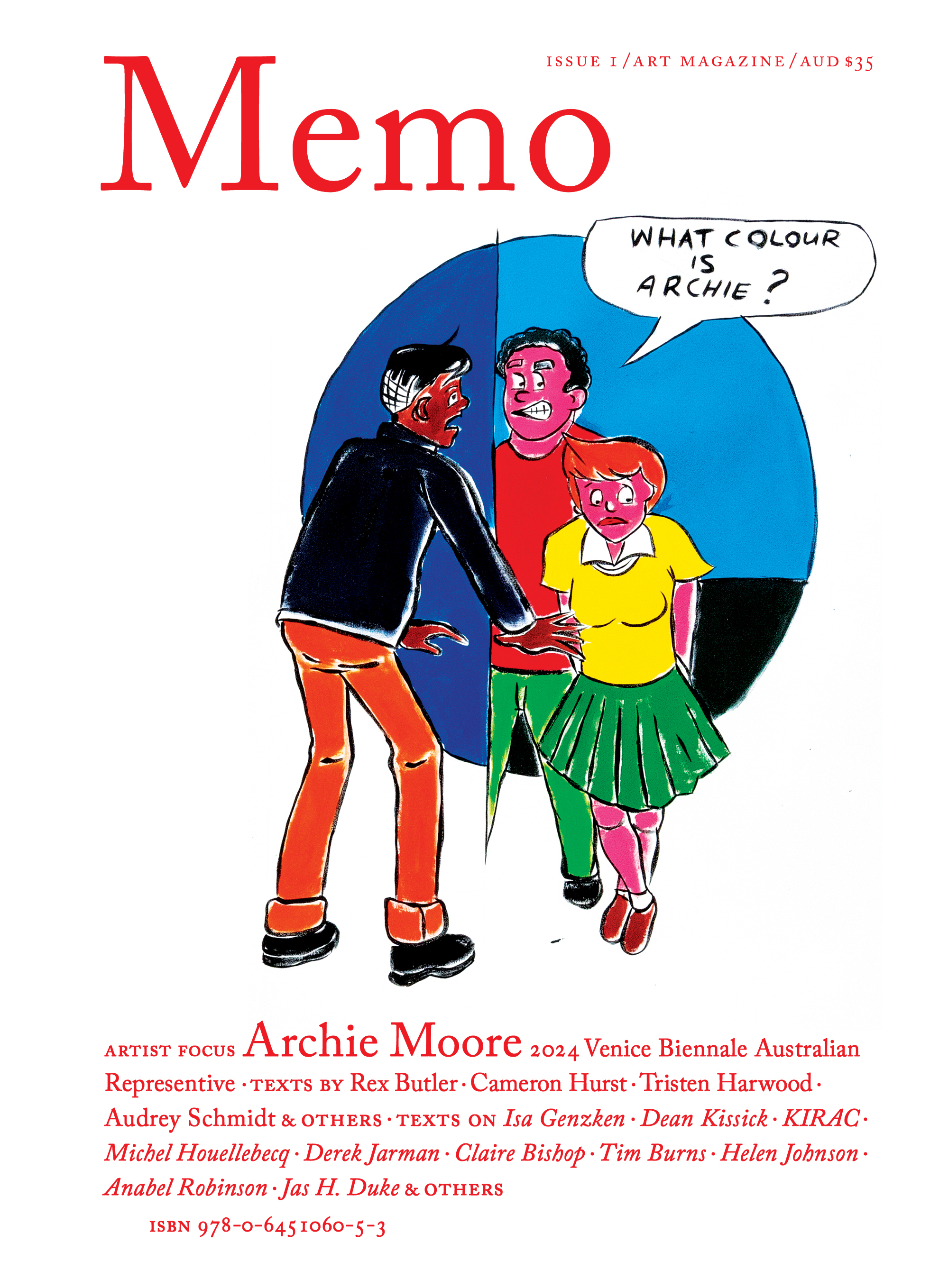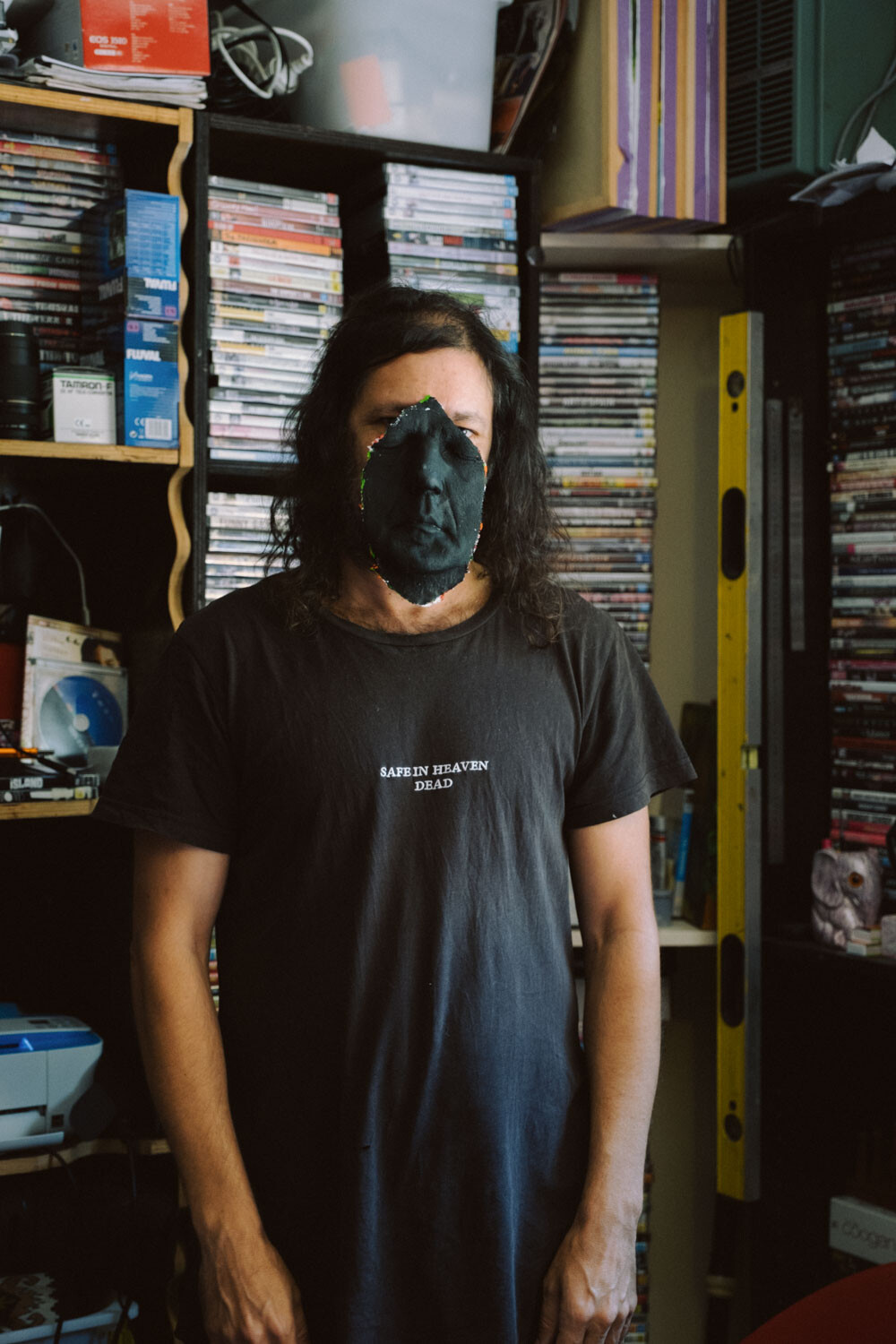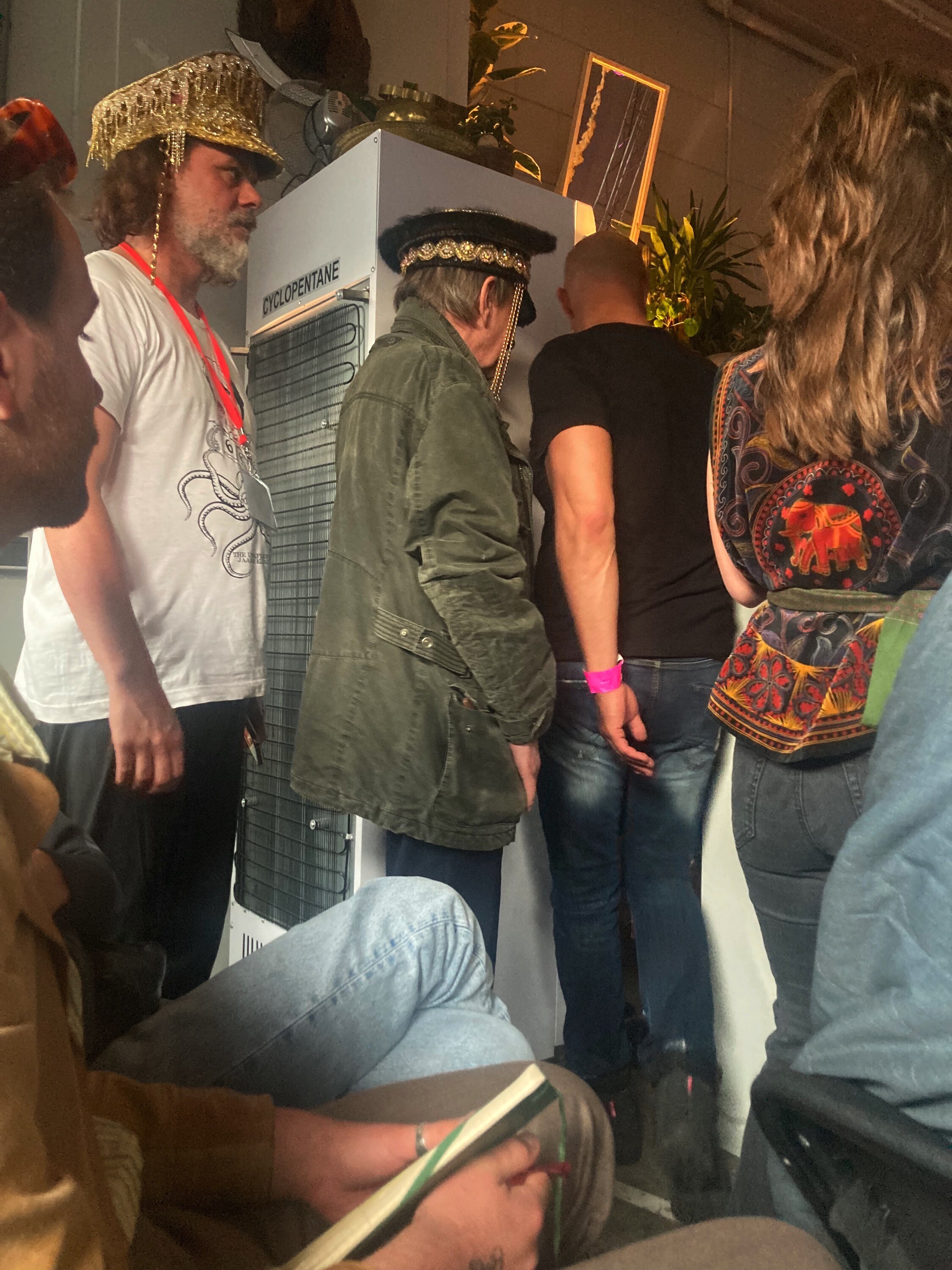Who’s Afraid of Red, Yellow, and Black?
Archie Moore’s minimalism plays a formalist trick on a settler audience that sees only an Aboriginal flag, never the painting itself.
My first encounter with both Archie Moore and his work occurred by chance. It was 2017 and Mnemonic Mirror, curated by artists Gary Carsley and Kylie Banyard, had toured to Griffith’s University Art Gallery (now Griffith University Art Museum). I was a volunteer and made a last-minute decision to observe the deinstallation of the exhibition. Archie was there assisting with the removal of Dermis (2012), three brittle sheets of paint. Each sheet was moulded over a wooden dowel, with red and black folded like tea towels, and yellow doubled over into a triangle. The three colours were akin to a deconstructed or abstracted Aboriginal flag. I asked a question about the work, to which Archie sheepishly replied, “I was thinking about painting, about minimalism.”
Exclusive to the Magazine
Who’s Afraid of Red, Yellow, and Black? by Hilary Thurlow is featured in full in Issue 1 of Memo magazine.
Get your hands on the print edition through our online shop or save up to 20% and get free domestic shipping with a subscription.
Related
From borrowing Tarkovsky at the UQ library to representing Australia at the Venice Biennale, Archie Moore’s art interrogates memory, history, and place. But what role does cinema play in his practice?
Kim Gordon’s rock-star body is an object of projection—vacuuming, sleeping, wielding a Jazzmaster in Airbnb limbo. From Sonic Youth to No Home Record, she performs middle-class blankness, but what’s staged, what’s real, and who’s the audience for her disembodied domestic rebellion?
KIRAC’s gonzo filmmaking shatters art world niceties, but their entanglement with Michel Houellebecq—novelist, provocateur, reluctant porn star—turns chaotic. As lawsuits fly and reputations fray, the real spectacle isn’t the film itself but the battle over who gets to tell the story.



